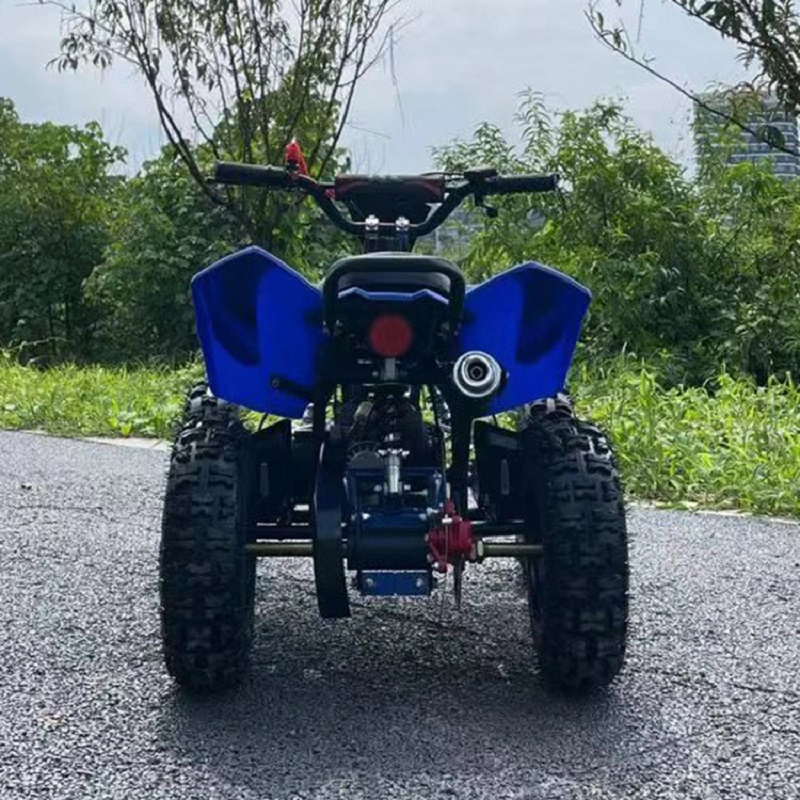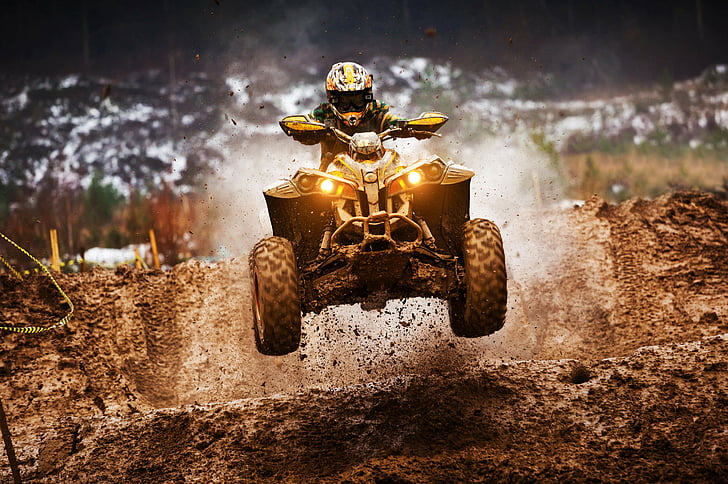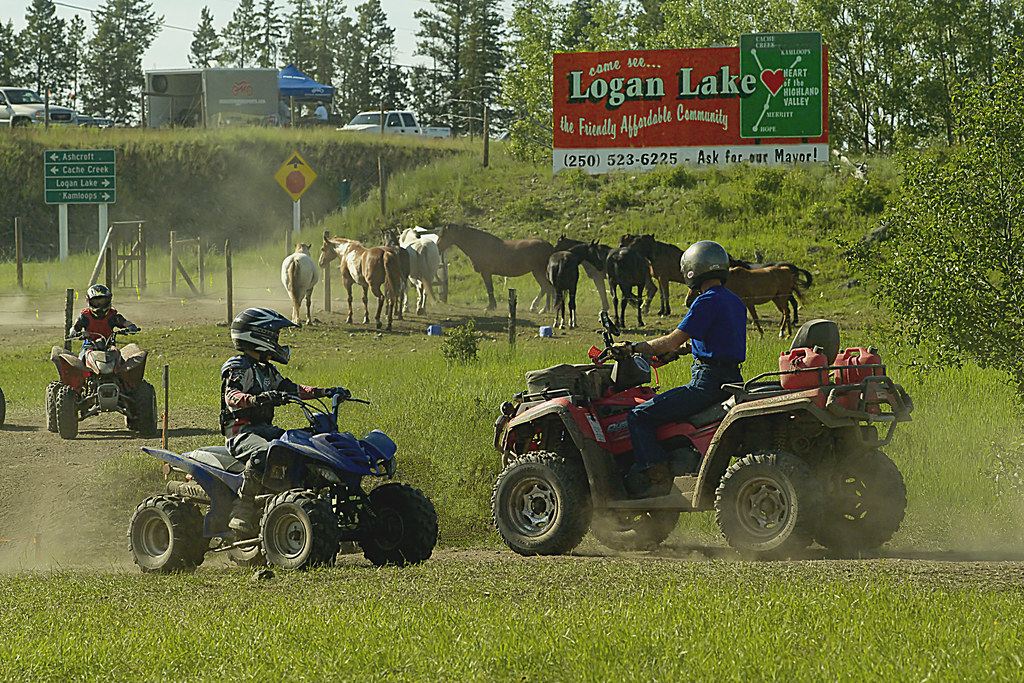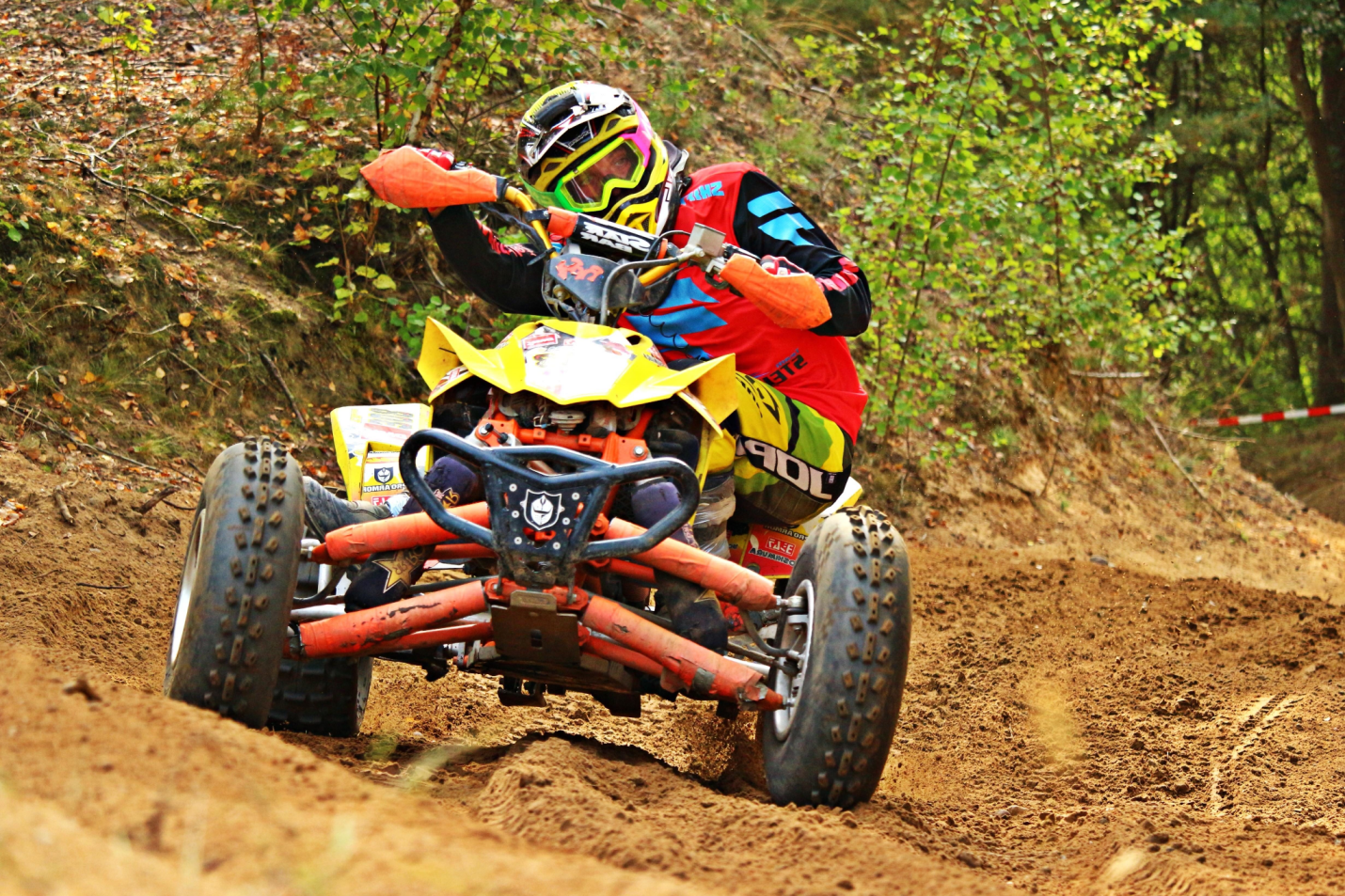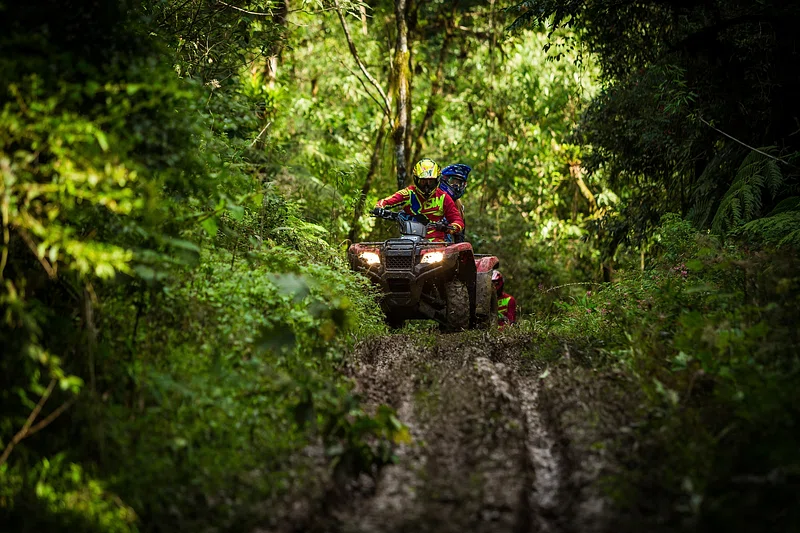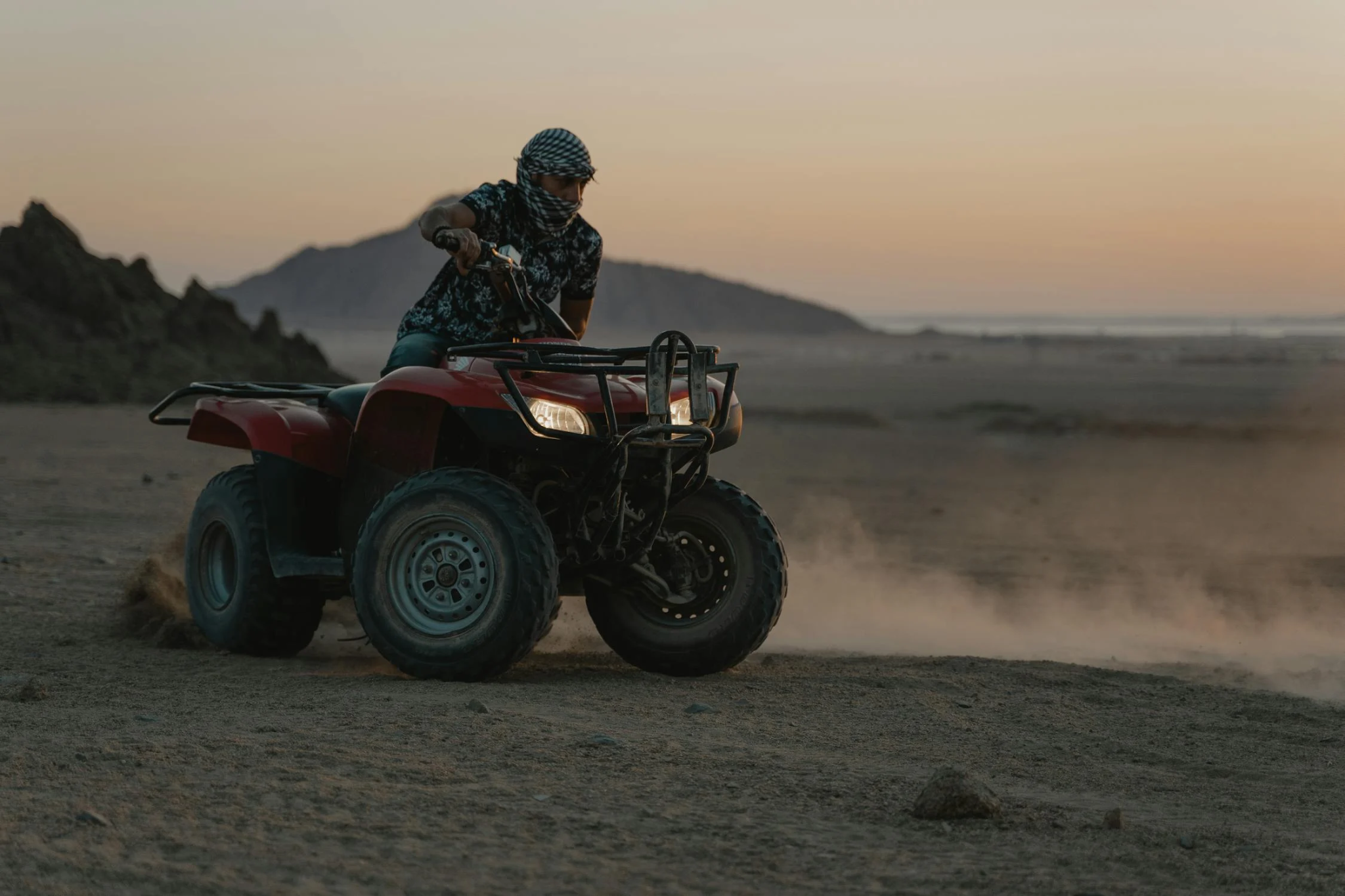Keeping your kids gas ATV running like new is easier than you think.
Parents often overlook one thing: regular maintenance. But it’s the key to keeping rides safe, smooth, and fun. When you care for your gas ATV the right way, it lasts longer and performs better. Your child’s joy ride should never be stopped by a surprise breakdown.
Meet the Sahara 40 a reliable 40cc 4 wheeler gas powered ATV that makes upkeep a breeze. Whether you're new to ATVs or have some experience, this guide walks you through everything you need to know.
From basic checks to seasonal care, here’s your complete plan for keeping your gas ATV for kids ready for every adventure.

Understanding Gas ATV Maintenance Basics
Why Maintenance Matters for Kids ATVs
● A well-maintained kids ATV is a safe one. Loose parts or low fluids can lead to accidents.
● Consistent care keeps the engine running strong and reliable.
● It extends the life of your investment by reducing wear and tear.
● A properly maintained ATV holds higher resale value. Buyers trust good records.
The Sahara 40's Maintenance-Friendly Design
● The 40cc 4-stroke engine runs cleaner and needs less attention than 2-stroke engines.
● Its one-gallon fuel tank is simple to refill and easy to check.
● Weighing only 81.6 pounds, the Sahara 40 is light enough for easy handling during maintenance.
● With 85% of the ATV already assembled, setup is fast, reducing early mistakes.
Maintenance Schedule Overview
● Daily: Spend 5–10 minutes checking basics like brakes, oil, and tires.
● Weekly: Do deeper checks like chain condition, spark plug, and air filter.
● Monthly: Clean the ATV thoroughly and look for hidden issues.
● Seasonal: Prep for weather shifts with oil changes, fuel system care, and protective coatings.
Daily Pre-Ride Maintenance Checklist
Essential Safety Inspections
● Examine the tires—check for air pressure and any sharp objects stuck in the treads.
● Press the brake levers to make sure both front and rear systems engage properly.
● Verify the emergency shut-off switch works in case your child loses control.
● Reflective strips on the ATV should be intact and visible, especially for evening rides.
Fuel and Engine Checks
● Open the fuel cap and visually check the one-gallon tank.
● Look at the oil dipstick to make sure there's enough clean oil in the engine.
● Peek at the air filter. A dusty ride can clog it fast.
● Start the engine and listen for abnormal sounds. A healthy gas atv for kids should purr, not stutter.
Quick Visual Inspections
● Touch the chain. It should feel tight but not too stiff. Lube it lightly if needed.
● Inspect the front collision guard. It should be firm and undamaged.
● Bounce the ATV slightly to check suspension response.
● Scan for cracks, rust, or loose bolts across the body.
Weekly Maintenance Procedures
Engine Care and Performance
● Check oil again and top it off if needed. Dirty oil means it’s time to change it.
● Remove the air filter and clean it with warm water and mild soap. Let it dry fully.
● Remove the spark plug and inspect it for carbon buildup. Use a wire brush if needed.
● Trace the fuel lines for any cracks or loose fittings. Gas leaks are serious fire hazards.
Tire and Wheel Maintenance
● Adjust the air pressure based on terrain. Softer terrain may need lower pressure.
● Measure tread depth. If it’s worn unevenly, your kids atv may need tire rotation.
● Spin each wheel and listen for clicking—this could mean worn bearings.
● Apply bearing grease to each wheel as needed.
Safety System Verification
● Hit the emergency stop switch with the engine running to ensure it kills power.
● Roll the ATV slowly and pull the brakes. They should stop without squealing.
● Check that the front guard hasn’t shifted. It must absorb impact in a crash.
● Wipe down reflective stickers with a soft cloth.
Monthly Deep Cleaning and Inspection
Thorough Cleaning Procedures
● Spray the engine with a degreaser. Use a soft brush to clean it gently.
● Air filters collect dirt quickly, especially for gas atv for kids ages 4-8. Clean or replace them monthly.
● Scrub the chain using a chain brush and re-lube after drying.
● Rinse the entire body, especially under the frame where grime collects.
Component Inspection and Adjustment
● Adjust chain tension. A loose chain can fall off during a ride.
● Remove brake covers and check the pads. They should not be worn thin.
● Grease the suspension pivots to reduce creaks and extend life.
Performance Optimization
● Open the carburetor and clean the jets if the ATV is running rough.
● Inspect the exhaust pipe for blockages or rust.
● Look inside the cooling fins around the engine and clean out dirt or leaves.
● Replace the inline fuel filter if you notice discoloration.
Seasonal Maintenance Requirements
Spring Preparation
● Pull your 40cc 4 wheeler gas powered out of storage and do a full checkup.
● Drain any old fuel. It can clog the system.
● Check cables for stiffness after months of inactivity.
Summer Maintenance
● Hot rides mean more dust. Clean the air filter every two weeks.
● Change the oil more frequently if the ATV is used often.
● Check that the cooling system is free of dirt and fully functioning.
● Tighten all exposed bolts that might loosen with vibration.
Fall Preparation
● Start planning winterization if temperatures drop.
● Add a fuel stabilizer to protect from moisture.
● Inflate tires slightly more to compensate for cold.
● Spray the frame with rust-resistant coating.
Winter Storage Maintenance
● Store the ATV in a dry garage with a breathable cover.
● Fill the tank fully and add stabilizer to avoid rust.
● Wipe down metal parts every few weeks to stop corrosion.
Troubleshooting Common Issues
Starting Problems and Solutions
● If your kids atv won’t start, check for old or low-quality fuel.
● Remove and clean or replace the spark plug.
● Wash or replace the air filter—it may be blocking airflow.
Performance Issues and Fixes
● A sudden power drop could mean a dirty carburetor. Clean it well.
● Poor acceleration? Check throttle cable tightness and adjust.
● If brakes squeak or grab, check for pad wear or warped discs.
● Uneven rides can signal suspension leaks or broken springs.
Safety System Troubleshooting
● If the kill switch doesn’t respond, check the wiring.
● Replace brake pads or cables that don’t function well.
● A cracked front guard must be changed for full protection.
● Missing reflective tape should be replaced immediately.
Tools and Supplies for ATV Maintenance
Essential Tools for Basic Maintenance
● A 10mm wrench will fit most bolts.
● Use a digital or manual tire gauge for quick checks.
● Keep a chain cleaning tool in your toolkit.
● Use a microfiber cloth and non-corrosive cleaner.
Recommended Maintenance Supplies
● Use 10W-30 oil for your gas atv for kids ages 4-8.
● Buy foam air filters and the correct cleaner for them.
● Use O-ring safe chain lube.
● Add fuel stabilizer before any long-term storage.
Safety Equipment for Maintenance
● Gloves protect against sharp metal and hot parts.
● Use goggles when working around fuel or compressed air.
● Always work outdoors or in a well-ventilated area.
● Have a fire extinguisher on hand—just in case.
Professional vs. DIY Maintenance
When to Do It Yourself
● Parents can easily handle oil checks, brake tests, and air filter changes.
● Cleaning and inspecting tires takes only minutes.
● Simple wiring issues or cosmetic fixes are DIY friendly.
When to Seek Professional Help
● Engine problems like stalling or overheating should be diagnosed by a tech.
● Replacing axles, suspension components, or electronics often needs special tools.
● Service under warranty should only be done at approved centers.
Finding Reliable ATV Service
● Ask local powersports dealers about ATV repair options.
● Use the manufacturer’s website to find authorized repair shops.
● Visit ATV forums or parent communities for trusted service tips.
Long-Term Maintenance Planning
Creating a Maintenance Schedule
● Mark a calendar for weekly, monthly, and seasonal tasks.
● Set reminders on your phone or fridge.
● Plan expenses for parts, fluids, and upgrades.
● Make it a fun routine with your child.
Maintenance Record Keeping
● Use a notebook or digital log.
● Note the date, task, and any parts used.
● Record fuel efficiency trends and odd engine sounds.
● Keep all receipts in one folder for proof of care.
Upgrading and Modifying Your ATV
● Switch to better grips or padded seats for longer rides.
● Install LED lights for night safety.
● Add splash guards to reduce dirt damage.
● Custom paint can keep your gas atv for kids looking new.

Making the Sahara 40 Your Low-Maintenance Choice
Why the Sahara 40 Simplifies Maintenance
● With a 4-stroke engine, the Sahara 40 needs fewer oil changes.
● Durable plastics resist damage and reduce replacements.
● Clear access to engine parts speeds up all routine work.
● Fewer moving parts mean fewer things to go wrong.
Long-Term Investment Protection
● Well-maintained ATVs ride better and last longer.
● Keep your Sahara 40 in shape to maximize resale value.
● Track your repairs to avoid costly surprises later.
Taking the Next Step: Getting Started
● Stock up on oil, chain lube, and air filters.
● Print your first checklist.
● Review this guide with your child and start together.
Conclusion
The Sahara 40 makes caring for a gas atv for kids satisfying and straightforward.
Three quick tips:
1. Check oil, tires, and brakes before every ride.
2. Clean and inspect monthly.
3. Use this guide for seasonal prep.
With these steps, your 40cc 4 wheeler gas powered ATV will stay fun, safe, and strong for years to come.

